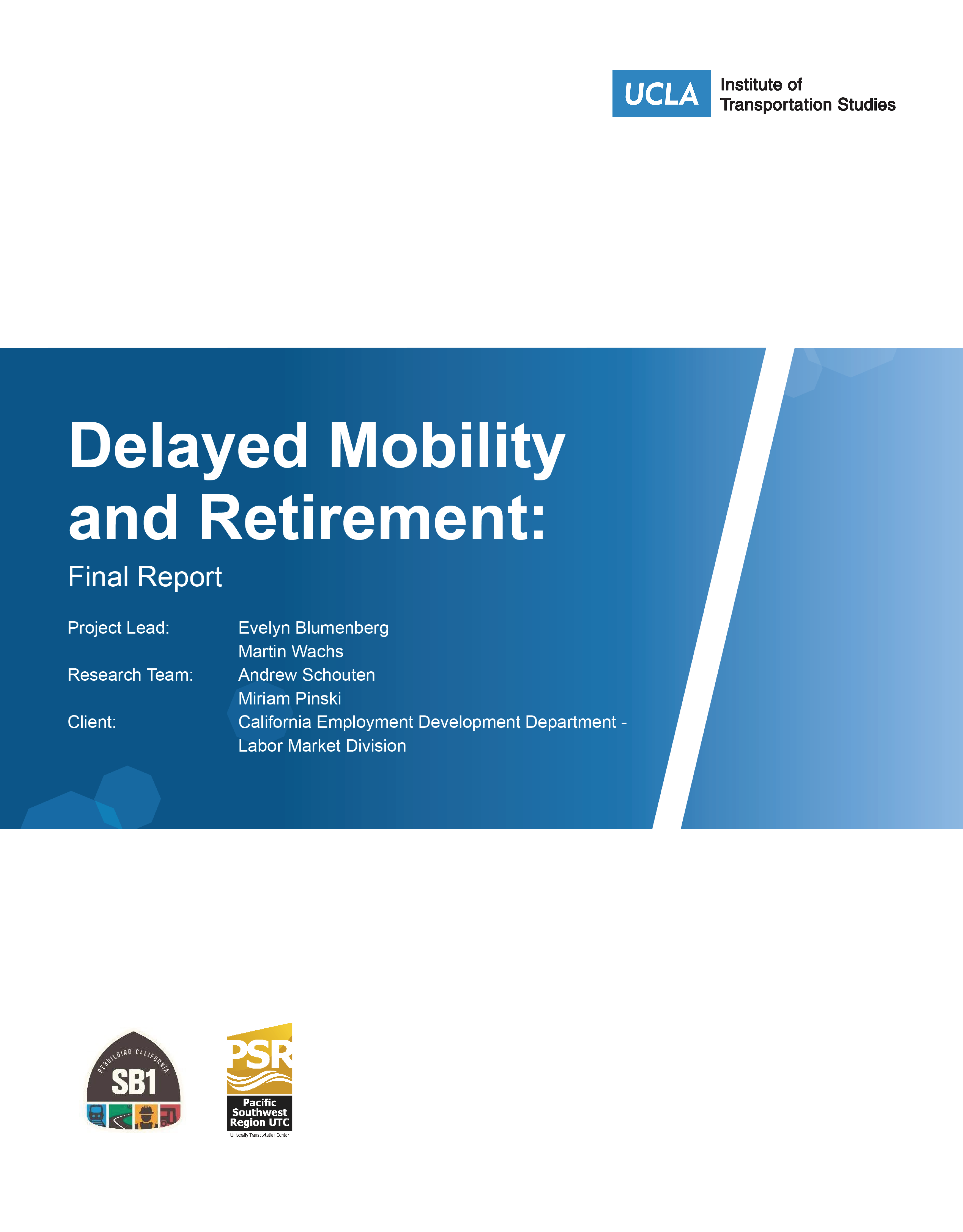Date: June 20, 2019
Author(s): Evelyn Blumenberg, Martin Wachs, Miriam Pinski, Andrew Schouten
Abstract
This report examines whether being more mobile is associated with decisions by older people to remain in the active work force after normal retirement age. Mobility includes having access to and the capacity to drive cars and being transit accessible or being able to walk to work or work at home. The report presents findings in three sections and concludes, based on research conducted thus far, that there are indications of causal associations between mobility and delayed retirement. The report includes a review of the literature linking mobility, travel by the elderly, and retirement decision making. Following the review of the literature is quantitative analysis of data from the California Household Travel Survey, including mathematical models of relationships between mobility and the propensity of older Californians to remain in the active work force. The final component of the research findings is a summary of the results of qualitative research consisting of focus groups and interviews. While the findings are not conclusive they show relationships which indicate that further research, particularly using longitudinal rather than cross sectional data, are warranted. After presenting findings, the report concludes with recommendations for further research.
About the Project
The population of California is aging as life expectancy increases and birth rates decline. Projections from the U.S. Census Bureau show that by 2030, the number of seniors in California will increase to 10.6 million, almost a quarter of the state population. Closely related, but far less studied, is the aging of the workforce as the population ages and many older people delay retirement either because they enjoy working or depend upon earned income to meet their needs. From a recent low of less than 6 percent of the working population, the share of employed Americans who are older than age 60 has climbed to over 10 percent of all workers and is projected to exceed 13 percent of the employed population by the middle of the next decade. The objective of this study is to determine, using data from the California Household Travel Survey, whether there is a relationship in California between mobility and delayed retirement.


